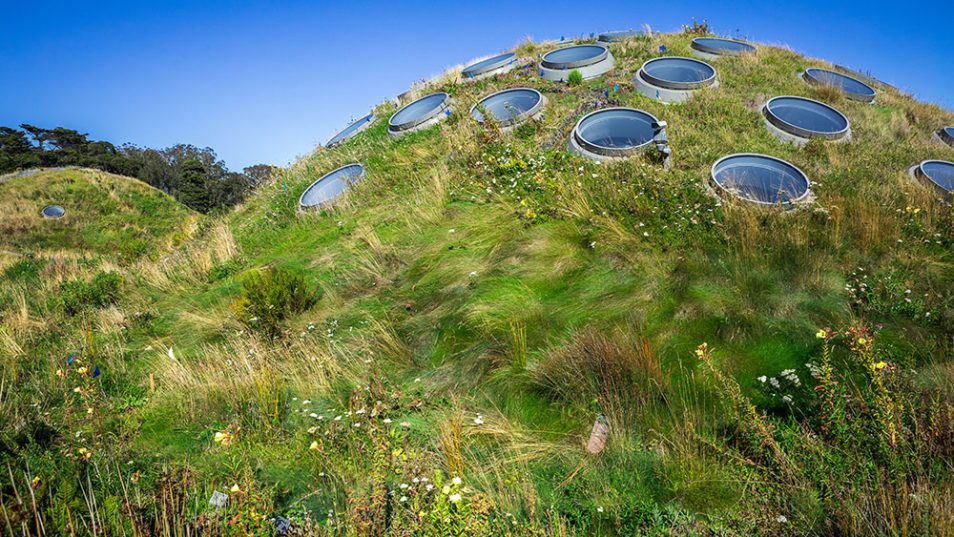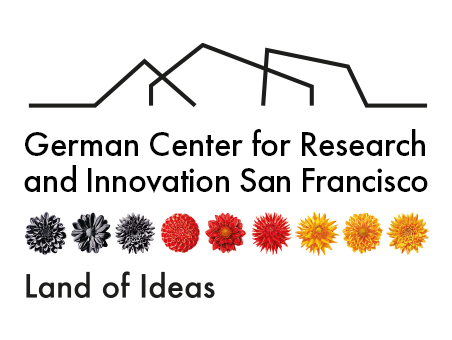Five facts relating to the DWIH focus topic “Sustainable Innovations”
 © California Academy of Sciences/Gayle Laird
© California Academy of Sciences/Gayle Laird
Artificial intelligence to combat forest fires, drinking water from the dishwasher and jeans as thermal insulation: the Bay Area around San Francisco lives up to its image as an innovation hotspot when it comes to climate action, too.
29.5 million liters of water are saved every year by a recycling system in the 61-story Salesforce Tower, a hotel and office building in San Francisco.
This is possible due to a decentralized system that enables the reuse of water that has already been used before – from showers, toilets, dishwashers and washing machines, for example. The water is purified by ultraviolet light and chlorine. Since 2015, all buildings in San Francisco with a total surface area of more than 100,000 square meters have been required to have a recycling facility of this type installed. One such system is in use at the city’s own public utility company. It saves 40 per cent of external water demand.
Over 1,000 cameras are in use in California in order to be able to combat forest fires more effectively.
In cooperation with the University of California San Diego, the California Department of Forestry and Fire Protection has developed a method that will make it possible to detect forest fires earlier in the future, thereby enabling more effective firefighting. For this purpose, an AI program evaluates image material from more than 1,000 cameras that are able to rotate 360 degrees around their own axis. The emergency services and authorities are automatically notified as soon as the software detects abnormalities. In addition, laser scans from aircraft and drones are used to generate a three-dimensional image of the surrounding area.
There are now more than one million electric cars on the roads of California:
the one million mark was exceeded for the first time in 2022. This figure includes both electric cars and plug-in hybrids. From 2035 onwards it will not be possible to sell any new vehicles in California that are powered solely by an internal combustion engine. One of the reasons electric cars are popular is because they allow you to use a special escape lane for congested highways (the so-called car pool lane), even if you are travelling alone. These lanes can only be used by gasoline-powered cars if there is more than one person travelling in the car. The state’s goal is to have 1.5 million zero-emission vehicles on the roads by 2025 and five million by 2030.
10,000 square meters of roof space were greened with 1.7 million indigenous plants for the California Academy of Sciences in San Francisco.
Located in the middle of Golden Gate Park, the institution combines an aquarium, planetarium, natural history museum and research facilities and is considered one of the most ecological museums in the world. 60,000 solar cells mounted on the canopy supply some 10 percent of the total energy required, and instead of air conditioning, windows are set in motion to regulate the heat level. Completed in 2008 according to plans by Italian star architect Renzo Piano, 90 percent of the building is made from material reused from the old museum that was destroyed by the severe earthquake in 1989. A thick cotton fleece made from recycled blue jeans was selected for the purpose of thermal insulation.
Four to five million fast-growing, CO2-binding “super trees” are to be planted in the U.S. by the San Francisco-based start-up Living Carbon by 2024.
The biotech company has developed new, genetically modified poplar trees that grow twice as fast, are more heat-resistant and absorb up to 27 percent more CO2 than their natural counterparts. This is mainly due to more efficient photosynthesis. In addition, Living Carbon is working on a genetic adaptation that allows trees to accumulate larger amounts of metals in their roots. These could then be used to remediate toxic soils, for example. Living Carbon CEO Maddie Hall is optimistic: she says it would be possible to plant enough trees by 2030 to eliminate as much as 1.66 per cent of the global emissions from the atmosphere that have been released since 2021.
